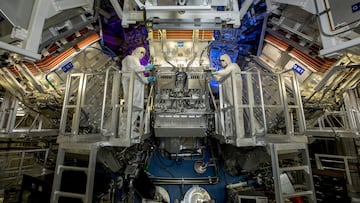What are the environmental risks of nuclear fusion energy?
A recent breakthrough may herald more widespread use of nuclear power production, but brings with it new potential dangers.


Earlier this week a federal laboratory in California announced that a crucial breakthrough had been made in the quest to develop sustainable new forms of energy.
Scientists at the Lawrence Livermore National Laboratory initiated a fusion reaction between two hydrogen atoms, which could be used in the future to generate energy without the use of fossil fuels.
“Today, we tell the world that America has achieved a tremendous scientific breakthrough,” said Energy Secretary Jennifer Granholm said.
“This milestone moves us one significant step closer to the possibility of zero carbon abundant fusion energy powering our society.”
Nuclear fusion brings other environmental risks
The technology is still thought to be many years away from large-scale application but it does show the potential for energy production without burning fuels. However some have suggested that nuclear fusion brings some environmental concerns of its own.
Nuclear power systems often involve the creation of radioactive waste material, such as uranium mill tailings, spent (used) reactor fuel, and other dangerous substances. A report from the US Energy Information Administration (EIA) states: “These materials can remain radioactive and dangerous to human health for thousands of years.”
Most of the waste produced in the nuclear industry has a relatively low level of radioactivity, but still have to be disposed of. Typically this involves it being buried underground or underneath the seabed, and covered with materials to prevent the sealing barrier from perishing.
More dangerous is the irradiated, or used, nuclear reactor fuel which is used to power the reactors which generate energy. This is highly reactive long after it becomes unusable and is often stored in specially reinforced pools of water, which both cools the fuel and acts to shield the radiation.
However the EIA points out that many reactor sites now move their older, and therefore less reactive, nuclear waste to outdoor containers that rely only on air cooling to dissipate the heat. This is less efficient and does not offer the additional layer of insulation offering by water cooling options.
Related stories
In fact, the EIA states: “The United States does not currently have a permanent disposal facility for high-level nuclear waste.”
But while all of this is a major hurdle to the more widespread use of nuclear energy, the process for dealing with a decommissioned reactor goes far beyond these steps. The Nuclear Regulatory Commission outlines the process for making safe nuclear power plants that have become disused, but there remains the risk that a contamination could provoke a major environmental disaster.

